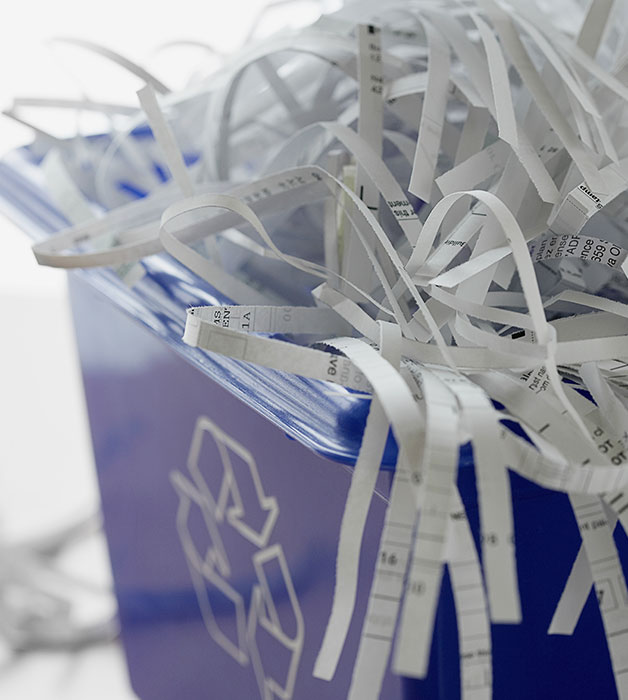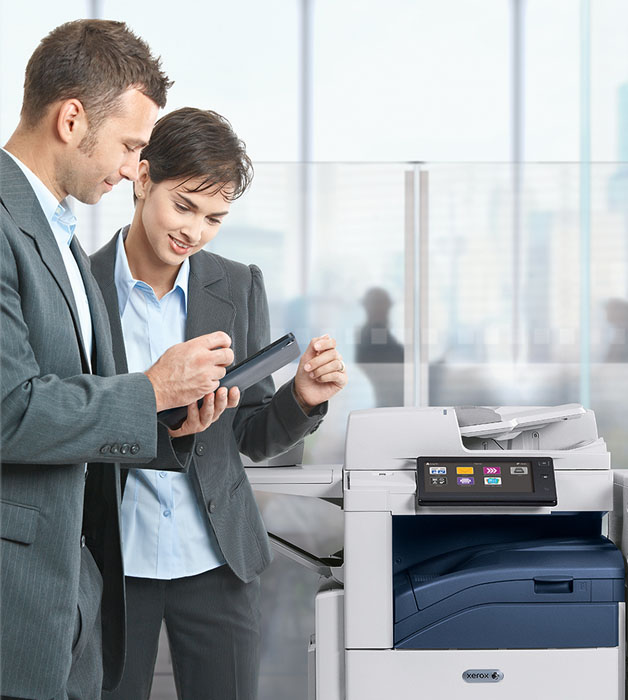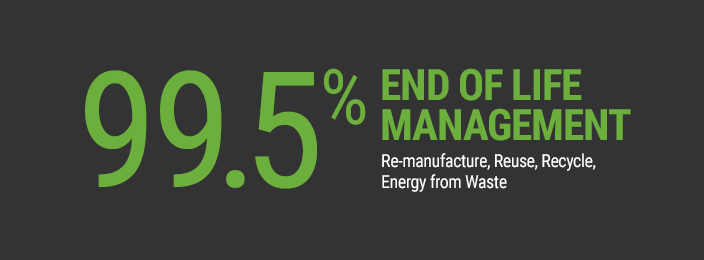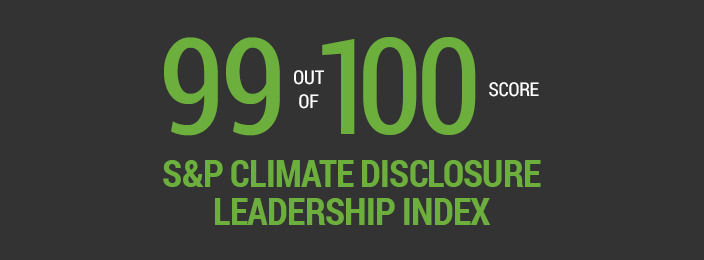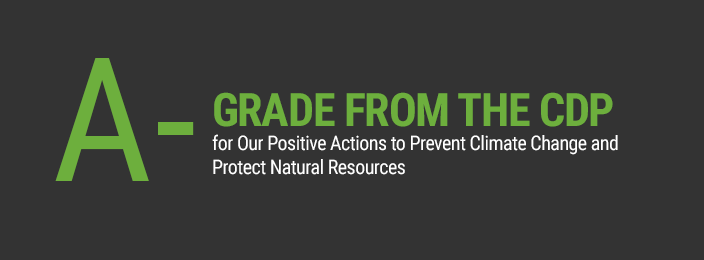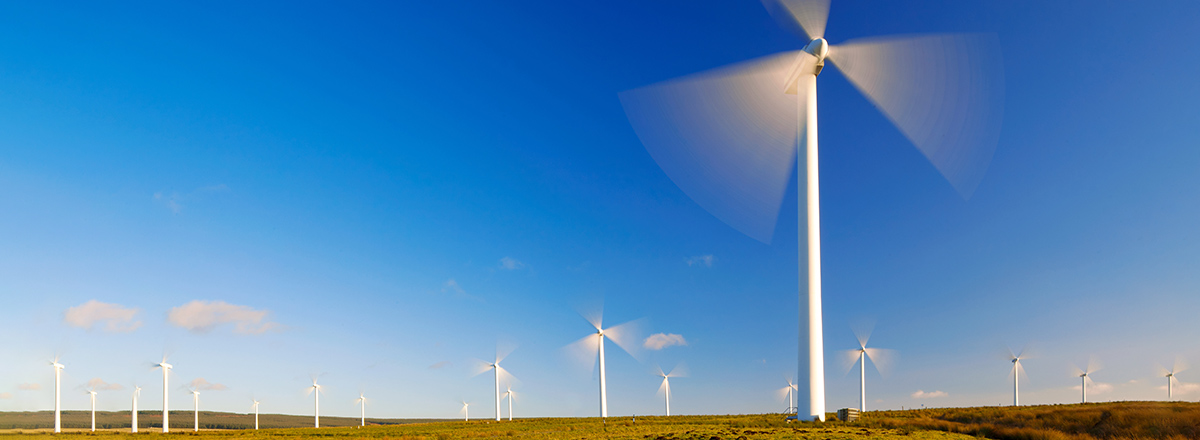
Preserving the Planet
Protecting the environment isn’t a “nice” thing to do at Xerox: it’s part of our DNA and the way we do business. For decades we’ve been managing our operations responsibly and delivering products and services that help our customers and the planet. And we’re still pushing the boundaries of what is possible.
In 2016, we managed 94 percent of non-hazardous solid waste beneficially which remained unchanged from 2015. We’ve established a new aspirational goal to drive our reuse/recycle rate to 100% by 2020 at our technology facilities compared to a baseline year of 2009.
To learn more about this information see our chart in the Responsible Operations section of this report for further details.
Non-hazardous solid waste recycling
As part of our commitment to conserve resources, we monitor water consumption across our manufacturing, distribution and R&D facilities worldwide. Having met our corporate goal to reduce water consumption by 21 percent by 2014 (against a 2009 baseline), we established a new goal to reduce water consumption by 35% by 2020 (against a 2010 baseline). Water consumption in 2016 was down 43% against the 2020 goal.
See more detailed information on water consumption and our new 2020 goal.
Since 2012, Scope 1 (direct) and 2 (indirect) greenhouse gas emissions are down 28 percent*. The reductions are the result of improved energy efficiency, new technologies and improved energy management practices.
* Note: the 2012 baseline has been restated. In accordance with the Greenhouse Gas Protocol, inventory adjustments are completed each year as a result of the opening and closing of facilities and the use of more appropriate emission factors to make data and performance trends between years more comparable.
See more detailed information on greenhouse gas emissions.
In 2016, 100 percent of our new eligible products met ENERGY STAR requirements. We’ve continuously reduced power consumption of our laser-based printing products by adjusting fuser design, changing properties of toner, implementing more efficient electronic controls and improving the entire xerographic system.
See more detailed information on ENERGY STAR® ratings for Xerox Products.
Our approach to managing products at end-of-life translates into significant environmental and financial benefits. Globally, our combined returns programs (equipment remanufacture in conjunction with parts and consumables reuse and recycling) prevented over 41,500 metric tons of waste from entering landfills in 2016 alone.
Learn more about the Xerox Green World Alliance.
At the conclusion of the Energy Challenge program, we successfully reduced energy consumption by 31 percent and cut emissions by 42 percent — that’s 210,000 tons of carbon dioxide equivalents (CO2e). Our new corporate-wide goal is to reduce energy consumption by 20 percent by 2020 (from a 2012 baseline). In 2016, we reduced energy consumption by 20 percent and cut emissions by 28 percent — that’s 92000 tons of carbon dioxide equivalents (CO2e).from a 2012 baseline*
* Excludes data centers numbers. Energy Challenge 2012 included fleet and facilities for the Technology Business (and Services). Energy Goal 2020 encompasses all parts of our business.
| ENERGY / GHGs | Reduction from 2002 Baseline | Reduction from 2012 Baseline | ||||
|---|---|---|---|---|---|---|
| 2012 | 2013 | 2014 | 2015 | 2016 | ||
| % Reduction Energy Use from Baseline (Scope 1 and 2) | 20% reduction by 2020 with a new baseline established in 2012 | 33% | 2% | 7% | 12% | 20% |
| % Reduction GHG Emissions from Baseline (Scope 1 and 2) | 20% reduction by 2020 with a new baseline established in 2012 | 42% | 4% | 9% | 20% | 28% |
Business travel plays a role in contributing to greenhouse gas emissions. In recent years, we’ve promoted videoconferencing and other technology as environmentally friendly alternatives to air travel. Thanks to these efforts, we’ve reduced emissions due to air travel by 25 percent per employee from 2012. This is equivalent to 0.04(1000 MT CO2 eq) per employee.compensation
